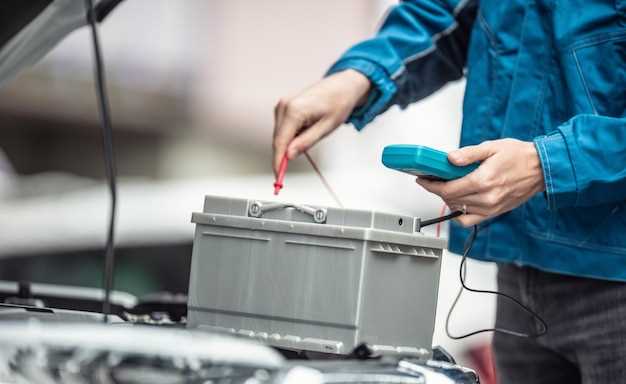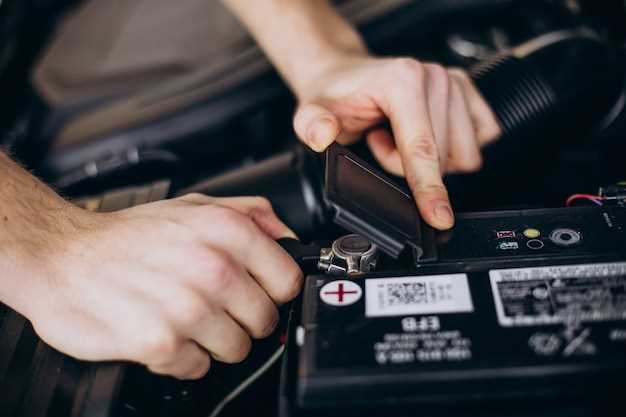
Understanding the reason why your car battery keeps dying is crucial for maintaining a reliable vehicle. The battery is a vital component of your car’s electrical system, and its failure can lead to unexpected and inconvenient situations. Identifying the underlying causes of a depleted battery can help you avoid frequent jump starts and potential breakdowns.
One common reason for battery failure is inadequate charging. If your car’s alternator is not functioning properly, it may not provide enough voltage to recharge the battery while you drive. This situation can worsen over time, leading to a battery that frequently runs low or dies completely. Regularly checking the alternator is essential to ensure it’s replenishing the battery’s charge effectively.
Another factor contributing to a dying battery is the overall condition of the battery itself. Factors such as age, corrosion, and improper maintenance can lead to a decline in battery performance. Over time, batteries lose their ability to hold a charge, which can leave you stranded if not addressed promptly. Being aware of these elements will help you take preventive measures and keep your vehicle running smoothly.
Understanding Your Car’s Charging System Malfunctions

A car’s charging system is essential for ensuring that the battery remains charged and the electrical components function properly. When this system malfunctions, it can lead to repeated battery failures. A thorough understanding of the charging system can help pinpoint the issues causing your battery to die frequently.
The primary components of the charging system include the alternator, voltage regulator, and battery. The alternator generates electricity while the engine is running, providing power to the electrical systems and recharging the battery. If the alternator is faulty, it may not produce adequate voltage, resulting in a drained battery.
The voltage regulator controls the output of the alternator, ensuring that the battery receives a stable voltage. If the regulator fails, it can lead to overcharging or undercharging of the battery, both of which can cause premature battery death. Signs of a failing voltage regulator include flickering dashboard lights and unusual battery behavior.
Another factor to consider is the condition of the battery cables and connections. Corroded or loose connections can disrupt the flow of electricity, effectively preventing the battery from receiving a full charge. Regular inspection and cleaning of the terminals can mitigate some of these issues.
Additionally, other components like fuses, belts, and even the vehicle’s computer system can impact the efficiency of the charging system. A broken belt can prevent the alternator from functioning, while a failing car computer can lead to incorrect charging signals. It is crucial to address these aspects to maintain a well-functioning charging system.
In summary, diagnosing the charging system’s health is vital to understanding why your car battery might be dying frequently. Regular maintenance checks and timely replacement of worn-out components can help prevent these issues and ensure the longevity of your battery.
Identifying and Fixing Battery Drain from Electronics
Electrical systems in modern vehicles are quite complex, and many components can inadvertently contribute to battery drain. Identifying the exact cause of battery drain is essential for resolving the issue and ensuring reliable vehicle operation.
Start by checking for any electronics that may not turn off when the vehicle is off. Common culprits include interior lights, aftermarket sound systems, and GPS devices. Sometimes, these systems can remain active even when the car’s ignition is turned off, causing the battery to deplete over time.
To diagnose the problem, use a multimeter to measure the electrical draw from the battery. First, ensure all electronic devices are turned off and disconnect the negative battery terminal. Connect the multimeter in series between the negative terminal and the battery cable. A normal draw is typically less than 50 milliamperes. If you notice a higher draw, start removing fuses one at a time to identify the circuit responsible for the excess drain.
Once the battery drain source is identified, inspect the particular electronic component. It may require a reset, repair, or replacement. For example, a malfunctioning radio could keep the system awake, while faulty wiring could cause short circuits. In some cases, reprogramming or replacing the device may be necessary.
Finally, consider upgrading the battery or installing a battery disconnect switch for long-term solutions, especially if the vehicle remains unused for extended periods. Regular maintenance of electronic systems can also help prevent future battery issues, ensuring a reliable and functional vehicle.
How Weather Conditions Affect Battery Performance

Weather conditions play a significant role in the performance and longevity of your car battery. Extreme temperatures, both hot and cold, can impact the chemical reactions that occur within the battery, affecting its ability to hold a charge.
In cold weather, battery capacity can decrease drastically. When temperatures drop, the electrolyte solution inside the battery thickens, leading to increased internal resistance. This makes it harder for the battery to deliver the power needed to start your vehicle. A fully charged battery may only provide about 40% of its normal capacity at temperatures around 0°F (-18°C). Additionally, if the battery is old or has been poorly maintained, its performance will be even more adversely affected in frigid conditions.
On the other hand, high temperatures can also be detrimental. Excessive heat can cause the battery fluids to evaporate, which may result in a shortened lifespan and reduced efficiency. When exposed to high heat, the battery may become overcharged, leading to excessive gassing and potentially damaging the internal components. It is essential to ensure proper charging practices to mitigate these risks during warmer months.
When preparing your vehicle for different seasons, it’s crucial to regularly check the battery’s health. Keep connections clean and maintain the appropriate fluid levels. Additionally, parking in shaded areas during hot weather and using engine block heaters in winter can help regulate battery performance. Understanding how weather influences battery charging and discharging can help you take proactive measures to avoid unexpected battery failures.



